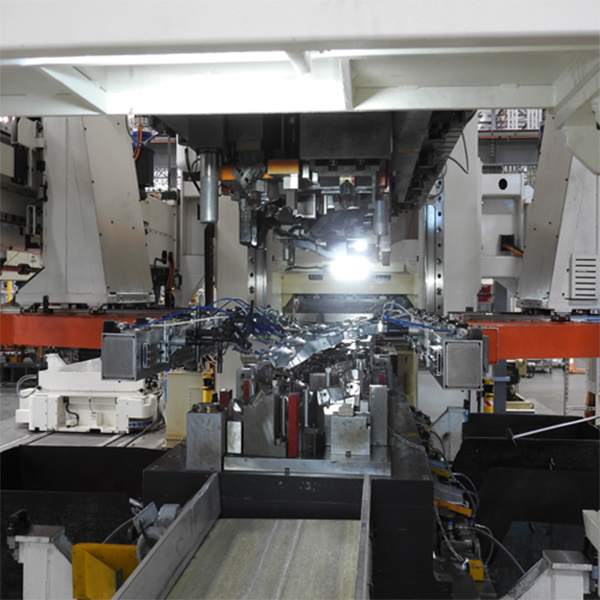Transfer Die Stamping Services

At Aranda Tooling, we are an industry-leading provider of metal stamping solutions. One of our core service offerings is transfer die stamping.
Due to its flexibility and cost-effectiveness, the process is used to create a variety of metal parts and products. Equipped with multiple presses with up to 1320-ton capacities, we use it to produce high volumes of components for domestic and international customers in a wide range of industries. Some of the industries we regularly serve include aerospace, automotive, electric vehicle, home improvement, manufacturing, medical, and renewable energy.
What Is Transfer Die Stamping?
Transfer die stamping is a stamping method that produces a component by passing a blank through a series of dies installed across a set of successive stations operated by a single press. The component blank is first separated from the larger metal strip, allowing it to be freely transferred. Then, it is transferred from one station to the next by a mechanical transport system until it is completely formed, eliminating the need for manual transfer and reducing the risk of misalignment or mishandling. Since transfer operations occur simultaneously—i.e., the workpiece at the first station is transferred to the second station at the same time the workpiece at the second station is transferred to the third station—the production line does not get backed up.
In addition to accommodating different stamping dies, transfer presses can hold tooling for piercing, chamfering, knurling, threading, and other forming processes. This versatility enables manufacturers to combine various secondary operations into the stamping process.
Benefits of Transfer Die Stamping
Compared to other manufacturing processes, transfer die stamping offers a number of benefits. For example:
- It can produce parts much faster than stamping processes with manual transfer operations.
- It can eliminate the need for separate post-stamping operations (e.g., knurling and threading).
- It can be used to create more complex and intricate components since the part is separated from the metal strip at the beginning of the process.